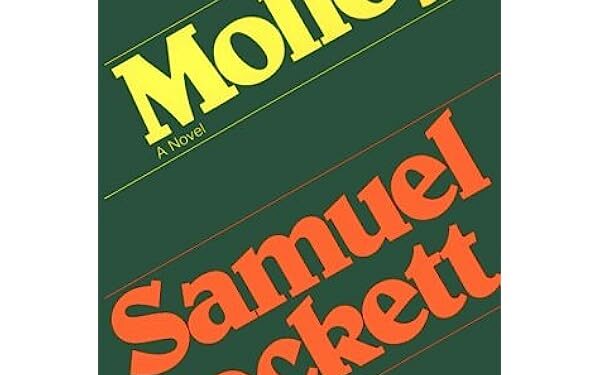Molloy Novel Summary by Samuel Beckett
Samuel Beckett’s “Molloy” is a remarkable and influential novel that showcases the author’s distinct style and existential themes. First published in 1951 as the first part of his “Trilogy,” alongside “Malone Dies” and “The Unnamable,” “Molloy” stands as a noble work that pushes the boundaries of narrative form and delves into the complexities of human existence.
Molloy Novel Summary by Samuel Beckett-“Molloy” presents the fragmented and introspective narrative of its eponymous protagonist, Molloy, as he embarks on a quest to find his mother. The novel is divided into two parts, with the first narrated by Molloy himself, recounting his journey and encounters, and the second focusing on a private detective named Moran, who is assigned to find Molloy.
Molloy Novel Summary by Samuel Beckett-Through their narratives, Beckett explores themes such as identity, language, memory, and the limitations of human perception.
One of the notable aspects of “Molloy” is Beckett’s innovative use of narrative form. The novel challenges traditional storytelling conventions by employing fragmented and non-linear narratives. The disjointed structure mirrors the fragmented nature of Molloy’s consciousness and his struggle to make sense of his own identity and experiences.
Molloy Novel Summary by Samuel Beckett-Beckett’s minimalist prose, characterized by precise and sparse language, enhances the introspective and contemplative atmosphere of the novel.
Also Read-
- The Bluest Eye Novel Summary by Toni Morrison
- Song of Solomon Novel Summary by Toni Morrison
- Beloved Novel Summary by Toni Morrison
- Chronicle of a Death Foretold Novel Summary by Gabriel García Márquez
Molloy Novel Summary by Samuel Beckett-Identity is a central theme in “Molloy.” The characters’ search for identity is interwoven with their search for meaning and purpose. Molloy’s quest to find his mother becomes a metaphorical exploration of the search for self.
As he traverses the physical and psychological landscapes, his identity becomes increasingly uncertain and fluid. The novel questions the stability and coherence of personal identity, inviting readers to ponder the nature of selfhood and the human condition.
Molloy Novel Summary by Samuel Beckett-Language and communication are also prominent themes in “Molloy.” Beckett emphasizes the limitations of language to fully capture and convey the complexity of human experience. The characters’ struggles with language mirror the inherent challenges of expressing oneself and connecting with others.
The novel’s introspective monologues and internal dialogues delve into the gaps and ambiguities that exist within language, highlighting the elusiveness of communication and the inherent isolation of the individual.
Molloy Novel Summary by Samuel Beckett-“Molloy” also explores the concept of memory and its role in shaping identity. Both Molloy and Moran grapple with fragmented memories and distorted recollections, further blurring the boundaries of their identities. Beckett questions the reliability and subjective nature of memory, suggesting that it can be unreliable and elusive, leading to a fragmented sense of self and a sense of existential unease.
The lasting impact of “Molloy” can be seen in its influence on literature and the arts. Beckett’s innovative narrative techniques and philosophical exploration have inspired subsequent generations of writers and artists. The novel’s existential themes and introspective style have shaped the development of modern literature, particularly in the realm of postmodern and experimental fiction.
Furthermore, “Molloy” challenges readers to confront the fundamental questions of human existence and the limitations of our understanding.
Molloy Novel Summary by Samuel Beckett-It invites us to grapple with the uncertainties and ambiguities of life, highlighting the complex nature of identity, language, and memory. Beckett’s exploration of these themes continues to resonate with readers, compelling them to reflect on their own lives and the human experience as a whole.
Conclusion
FAQ.
Q: When was “Molloy” first published?
A: “Molloy” was first published in 1951 as the first part of Samuel Beckett’s “Trilogy,” which also includes “Malone Dies” and “The Unnamable.”
Q: Is “Molloy” a difficult novel to read and understand?
A: “Molloy” can be challenging to read due to its fragmented narrative structure, introspective prose, and philosophical themes. The novel requires careful attention and interpretation to fully grasp its complexities and nuances. However, the experience of reading “Molloy” is often considered rewarding for those who appreciate experimental and thought-provoking literature.
Q: Does “Molloy” have a linear narrative?
A: No, “Molloy” does not follow a linear narrative structure. The novel is fragmented and non-linear, shifting between different perspectives and timelines. This structure mirrors the fragmented nature of the characters’ consciousness and their struggles with identity and memory.
Q: How has “Molloy” influenced literature?
A: “Molloy” has had a significant influence on literature, particularly in the realm of postmodern and experimental fiction. Beckett’s innovative narrative techniques, minimalist prose, and exploration of existential themes have inspired subsequent writers to push the boundaries of storytelling and to delve into the complexities of human existence.
Q: Is “Molloy” a standalone novel or should it be read as part of the “Trilogy”?
A: “Molloy” can be appreciated both as a standalone novel and as part of the “Trilogy.” While each work in the trilogy stands on its own, they are interconnected thematically and can enhance the understanding and interpretation of one another. Reading the entire trilogy provides a more comprehensive exploration of Beckett’s philosophical and literary vision.

















